Recording Yourself for YouTube: A Complete Guide
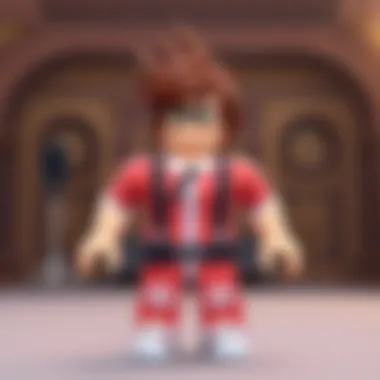

Intro
In the fast-evolving landscape of digital content, creating impactful videos is a skill that many aspire to master. The journey to recording yourself for YouTube is not merely about pointing a camera and hitting the record button; it demands a blend of thoughtful strategy, technical know-how, and a sprinkle of creativity. Whether you’re an enthusiastic novice or looking to refine your existing skills, understanding the nuances of recording oneself is critical in producing content that resonates with viewers.
This guide dives into the essentials of video production: from selecting the right equipment to the art of engaging storytelling. Indeed, it lays the groundwork for turning your ideas into videos that can capture and hold attention. Each section is crafted to reflect common challenges faced by aspiring content creators and offers practical solutions.
By the end of this article, you’ll be equipped with the knowledge to navigate the challenges of video production confidently. The aim is clear—empower you to illuminate your unique perspectives in a world inundated with visual noise.
Gameplay Tips
When we refer to gameplay tips in the context of recording for YouTube, we are not just talking about mastering the technical aspects. We’re also touching on how these skills can translate into compelling content creation. Let's break this down further.
Basic Controls and Navigation
Understanding the basic controls of your recording setup is crucial. For instance, when using software like OBS Studio or Camtasia, learning to navigate the interface can save valuable time during recording. Here are some fundamental tips:
- Familiarize yourself with the recording software interface.
- Set up hotkeys for starting and stopping recordings, which can be a massive time-saver.
- Check your audio levels before recording to avoid the frustration of redoing takes.
Advanced Gameplay Strategies
After you've got the basics down, it’s time to refine your craft. Advanced strategies can set your videos apart from the sea of content out there. Consider the following:
- Storyboarding: Develop a clear script or outline for your video. This ensures you stay on track and deliver cohesive content.
- Engagement Techniques: Consider the questions your viewers might have. Address them within your content, creating a more interactive experience.
- Editing Skills: Learning to edit effectively can heighten the production quality. Use tools like Adobe Premiere Pro or Final Cut Pro to cut unnecessary footage and add different visuals or sounds.
"The ability to control your narrative through gameplay is a powerful tool. Master it, and the audience will follow you anywhere."
By honing these skills, your content becomes more than just an idea; it transforms into a captivating journey for your viewers, drawing them in with each frame. Ultimately, every detail matters in this competitive landscape, and mastering gameplay techniques can lead to a polished final product that will resonate widely.
Prelude to Self-Recording for YouTube
In today's digital landscape, self-recording for YouTube has become an essential skill for content creators. The ability to produce engaging video content not only allows you to express your passions but also connects you with an audience that shares similar interests. Whether you're a seasoned pro or just stepping into the ring, understanding the nuances of recording yourself is vital to becoming a successful YouTuber.
Having a strong grasp on self-recording enables you to communicate ideas effectively, maintain viewer interest, and ultimately build a dedicated follower base. This article dives deep into the various aspects of recording, from choosing the right equipment to editing techniques and beyond. As the popular saying goes, "Seeing is believing." In the context of YouTube, the more authentic and engaging your videos are, the more likely viewers are to stick around and subscribe.
Another benefit of self-recording is the creative control it affords you. Unlike traditional formats, where many factors are out of your hands, YouTube allows you to dictate your content and style. You'll get to decide what stories to tell and how to tell them, putting your unique spin on your subject matter. It’s your chance to shine, share your voice, and contribute to the vibrant tapestry that is the YouTube community.
Understanding the Importance of Video Content
Video content has boomed in popularity over the past decade. Audiences today are drawn to video because it provides immediacy and a sense of presence that static text simply cannot. It speaks volumes when you can show rather than just tell. This mental shift from reading to watching has profound implications for how information is consumed.
For instance, a tutorial on a complex gaming maneuver might receive deeper engagement when demonstrated visually. Viewers can follow along easily, grasping intricate details that words on a page might miss. Additionally, video content is often more shareable on social platforms, increasing its reach and potential impact. In essence, creating video content allows for richer, multi-dimensional storytelling.
Identifying Your Niche and Audience
Before you hit the record button, it’s crucial to identify your niche. The digital world is teeming with creators, each carving out their own space. Ask yourself, "What sets me apart?" Knowing what makes your perspective unique will influence how you present your content.
Besides honing in on your niche, knowing your audience is just as important. Ask yourself: Who are you creating for? What do they seek in terms of content? Are they looking for entertainment, education, or inspiration? Keeping these elements in mind will help shape your content creation strategy.
A well-defined audience not only guides your content direction but also enhances engagement. As you develop your videos, use metrics and feedback to inform your understanding of viewer preferences, tailoring your content to meet their needs effectively. In a way, it’s a team effort: you bring your abilities, and your audience brings their needs and expectations. Together, it creates a fulfilling viewing experience.
"The audience doesn’t just watch; they participate in your story. Know them, and you will succeed."
Essential Equipment for Recording
Recording great content for YouTube requires more than just enthusiasm and a decent idea; it needs the right tools at your disposal. The quality of your video and audio can make or break your channel's appeal. When viewers switch on a video, they expect to see and hear clearly. Quality equipment plays a huge role in meeting that expectation. Investing in essential recording gear is not just a suggestion; it's a necessity that can lead to increased viewer retention and engagement.
Choosing the Right Camera
A camera can be the heart of your video creation process. There’s a world of options out there ranging from smartphones to high-end DSLR and mirrorless cameras. So, how do you choose the right one?
- Smartphones: For many beginner YouTubers, a modern smartphone can do the trick. They typically come with impressive cameras that shoot 1080p or even 4K. Just ensure your phone has enough storage for the videos you plan to create.
- DSLR or Mirrorless Cameras: If you’re looking for more professional quality, investing in a DSLR like the Canon EOS Rebel series or a mirrorless option like the Sony Alpha series may be the way to go. They offer you more control over settings, better low-light performance, and the ability to swap lenses to create unique visuals.
- Webcams: A solid option for streaming or casual vlogs. These are user-friendly but often lack the image quality found in DSLRs.
Ultimately, think about your needs. What type of content are you creating? Will you be moving around, or filming from a fixed position? Each camera type has its strengths. Assessing your niche, you can make a well-informed decision.
Microphone Selection for Quality Audio
YouTube is primarily a visual medium, yet don’t underestimate the power of clear audio. Poor sound can frustrate viewers faster than bad video quality. Here’s a breakdown of common mic options:
- Lavalier Microphones: Tiny lapel mics that can clip onto your shirt. They’re great for hands-free recording and are particularly useful for interviews or tutorials.
- Shotgun Microphones: These are directional mics that pick up audio primarily from where they're pointed. Perfect for outdoor recording, or when you want to isolate your voice from background noise.
- USB Condenser Mics: Excellent for voiceovers or when recording at a desk. A model such as the Blue Yeti can offer great sound quality without breaking the bank.
When selecting a mic, consider your environment. If you’re shooting in a noisy area, invest in a shotgun mic with wind protection features. That's an easy fix to avoid sounding like you’re in a wind tunnel.
Lighting Options for Optimal Video Quality
No one wants to watch a video that's darker than a coal mine. Lighting can completely alter the perception of your video. Here are ways to ensure you’re lit up like a star:
- Natural Light: The simplest and cheapest option. Use windows to your advantage. Shoot during the day when natural light is abundant. However, be cautious of shadows.
- Softbox Lights: Ideal for indoor setups, these provide diffused lighting, reducing harsh shadows. They mimic natural light, ensuring you appear vibrant and lively on camera.
- Ring Lights: Popular among YouTubers, especially makeup artists, these provide even lighting directly on your face, making it look flawless.
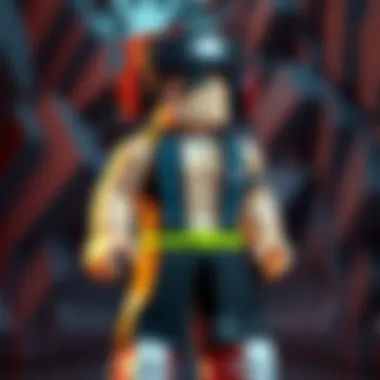
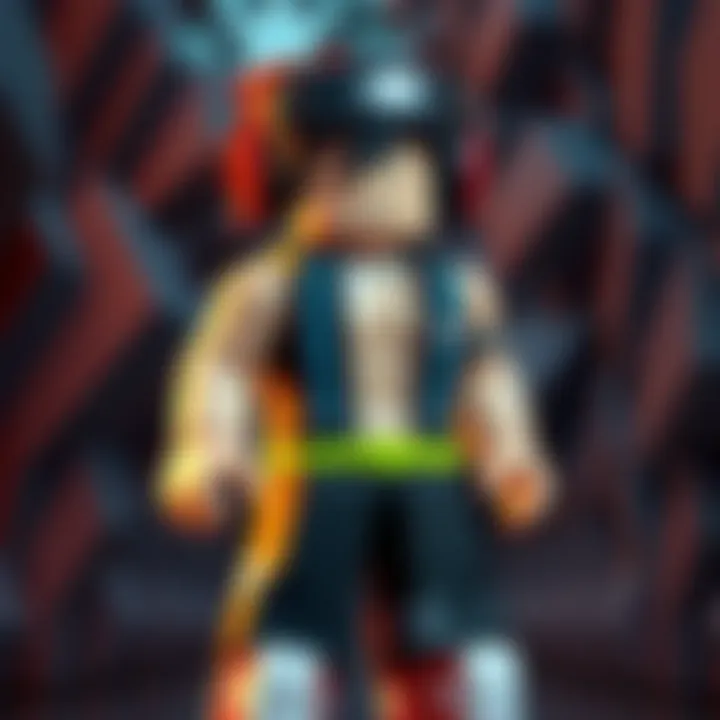
Setting up your lights properly can often mean the difference between looking like a professional and looking like a ghost on camera. Experiment with your setup to find what works best for your particular filming situation.
"Investing in quality equipment can seem daunting, but consider it a stepping stone toward your creative journey. Premium tools lead to premium content."
In sum, each piece of equipment plays a crucial part in the recording process. Blending the right camera, microphone, and lighting can elevate your video quality, keeping your audience engaged. Consider your unique content style and environment when selecting equipment. Making informed choices on these essentials will pave the way for greater success on your YouTube journey.
Preparing for Your Recording Session
Getting ready for your recording session is like laying the groundwork before you build a house. Spending time on this crucial step can save you a heap of trouble down the line. It’s not just about having the right gear but making sure everything flows smoothly when those cameras start rolling.
Scriptwriting for Clarity and Focus
Crafting a well-organized script is the backbone of a successful recording. It helps keep your message crystal clear and on point. Think of it as your roadmap. Without it, you might find yourself wandering aimlessly. A good script should outline key points you want to convey, ensuring you don't miss any essential details.
Here are some important points for effective scriptwriting:
- Outline Major Ideas: Start with main themes and sub-points. This structure keeps your delivery focused and ensures the viewer follows along effortlessly.
- Keep It Natural: Your script shouldn’t sound rehearsed. Write in a conversational tone that’s easy to comprehend. It's crucial to feel relaxed yet authoritative.
- Practice Makes Perfect: Read your script out loud a few times. This can help iron out awkward phrasings and improve your overall delivery.
Ultimately, a well-thought-out script enhances clarity and keeps your audience engaged.
Setting Up Your Recording Space
The environment in which you record can significantly influence the quality of your video. A cluttered background or poor lighting can distract viewers from your content.
When preparing your recording space, consider the following:
- Eliminate Background Noise: Choose a quiet location. Close windows, turn off fans, and silence any distracting electronics.
- Create the Right Ambiance: Make sure your background isn’t too busy or distracting. If possible, use simple, non-distracting decorations that reflect your personality.
- Lighting Matters: Natural light is your best friend. Try to position yourself facing a window. If that’s not possible, soft white lights can help illuminate your face without harsh shadows.
Don’t overlook these details; a well-set space sets the stage for professional-looking content.
Practicing Your Delivery
Just like a painter practices their strokes before unveiling a masterpiece, you need to rehearse your delivery. This step can be the difference between a good presentation and a great one. It boosts your confidence and helps eliminate any anxiety when it's time to record.
Here are some tips to practice effectively:
- Rehearse in Front of a Mirror: This helps you gauge your body language and facial expressions. You might find quirks about yourself that you’d want to change or enhance.
- Record Yourself: Listen back to capture your tone and pace. This playback can help identify where to speed up or slow down.
- Get Feedback: If possible, practice in front of friends or family and request constructive criticism. Having an outside perspective can provide insight you might overlook.
Practicing not just solidifies your content but also shapes how your audience perceives you. Being at ease with your delivery can turn a stumbling block into a stepping stone.
"Preparation is key in every endeavor; it’s the bridge between dreams and reality."
By investing time in each of these areas, you lay the groundwork for successful video creation. Your audience deserves to see your best foot forward, and preparing effectively contributes to that goal.
Techniques for Effective Self-Recording
Recording yourself for YouTube goes beyond just aiming a camera at yourself and hitting the record button. It's a craft, an art form, and an important way to communicate with an audience. When executed well, effective self-recording not only captures your message clearly but also engages viewers in a way that builds connection. Focusing on a few core techniques can drastically improve the look and feel of your videos, guiding the viewer's eye and making sure they stay tuned in.
Framing and Composition
Framing is like the foundation of a house; if it's off, everything else can crumble. Proper framing helps to draw the viewer’s attention where it matters. Centering yourself in the frame is an obvious starting point, but there is more to it. Following the Rule of Thirds can lead to a more aesthetically pleasing shot. Imagine dividing your frame into nine equal sections; placing yourself at one of the intersections often attracts the viewer’s eye better than being dead center.
Also, consider background elements. A cluttered space can distract from your message. It's advisable to opt for a clean backdrop and ensure it's relevant to your content. Adding personal touches like props that resonate with your message can elevate your framing, but don’t overdo it. Less is often more.
"Framing isn't just about where you place the camera; it's about directing the viewer's focus."
Using Eye Contact and Body Language
When you are on camera, eye contact works wonders. It can create a sense of intimacy and connection. Speak directly to the lens as if you’re chatting with a friend. This creates a perception of authenticity and engagement. Remember to occasionally glance away, as it can mimic natural conversation and not feel rehearsed or stiff.
Body language is equally crucial. If you’re seated, sit up straight. Use your hands to emphasize points; they can add dynamism to your delivery. However, be mindful—excessive movement can take away from the content you’re presenting. Practice being aware of your posture and movements as they contribute to how you come across.
Incorporating Visual Elements
Visual elements can be game-changers in your videos. They break up the monotony and provide additional context to your message. Incorporating graphics, images, or even animations can elaborate on your point, providing clarity where words might fall short. Tools like Canva or Adobe Spark allow you to create engaging visuals easily and can be integrated into your video editing software seamlessly.
Texture matters too. Whether showcasing products or various scenes, visual diversity keeps audience members engaged. Use close-ups and different angles to create a narrative within the narrative. For instance, if you're talking about a game, showing gameplay clips while addressing your audience can enhance understanding.
In summary, effective self-recording requires an understanding of framing, engaging body language, and the clever use of visuals. The end goal is simple: connect with your audience in an authentic manner, making them feel part of the journey. Master these techniques, and you'll be well on your way to producing top-notch YouTube content.
Editing Your Video Content
Editing your video is where the magic happens. It’s the stage where raw footage transforms into a coherent narrative, engaging your audience and reinforcing your message. If recording is about capturing the essence, editing is about highlighting it in the best light. Effective editing can elevate a mediocre video to something that captivates and retains viewers' attention. This process offers a chance to polish your content. It can enhance clarity, keep the pacing lively, and maintain viewer interest.
Choosing Editing Software
Selecting the right editing software can feel overwhelming at first, given the plethora of options available, from beginner-friendly apps to advanced professional software. A crucial first step is to assess your needs and skill level. For someone just starting, tools like iMovie on Mac or OpenShot are user-friendly and free. If you find yourself craving more advanced features, consider Adobe Premiere Pro or Final Cut Pro. They come packed with capabilities but can expose an unwary user to a steep learning curve. Here’s a quick rundown of software options:
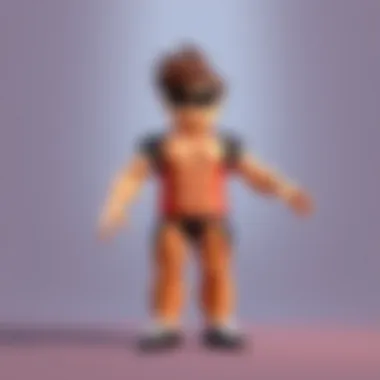
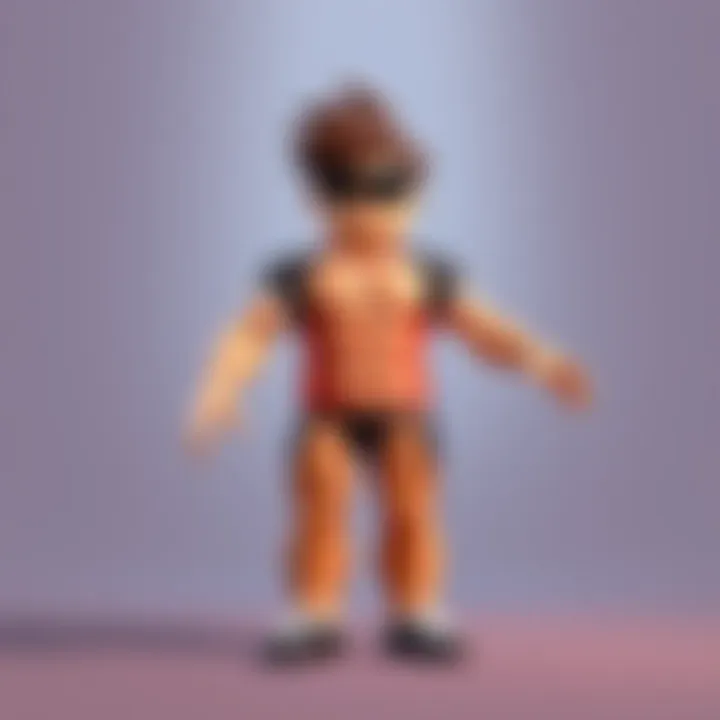
- iMovie: Great for beginners seeking basic editing tools.
- OpenShot: An open-source solution with intuitive controls.
- Adobe Premiere Pro: Ideal for those aiming for a professional edge.
- Final Cut Pro: A powerful option for Mac users with a focus on speed and efficiency.
Basic Editing Techniques
Once you’ve got your software sorted, it’s time to roll up your sleeves. Basic editing techniques are essential to refining your videos. Start with cutting and trimming your clips to remove any fluff. Keeping your content concise is key; aim for a streamlined flow that maintains viewer interest. Familiarize yourself with other fundamental tools such as:
- Transitions: To smoothly shift from one scene to another, but don’t overdo it.
- Color Correction: To enhance the visual appeal of your footage, ensuring your colors are vibrant and true to life.
- Audio Adjustment: Ensure your audio levels are balanced; nothing ruins a good video like muffled audio or abrupt changes in sound levels.
Adding Effects and Transitions
Now we get into a bit of flair. Effects and transitions can help convey your brand and style. However, here’s the catch: moderation is vital. Simple fades or cuts are often more effective than flashy transitions that could distract from your core message. Using effects wisely can enhance storytelling. For instance, add text overlays to emphasize key points or insert a subtle zoom for dramatic effect. A correctly placed effect can be the cherry on top of your video pie, but when misapplied, it can throw the whole thing off balance.
Incorporating Background Music and Sound Effects
Nothing sets the mood quite like a well-chosen soundtrack. Background music can transform the viewing experience, influencing emotion and engagement. Pay extra attention to copyright; using royalty-free music from sites like Epidemic Sound or Artlist can save you from potential legal headaches. Sync your audio elements with visual cuts for a more immersive experience. Sound effects, when used strategically, add a layer of professionalism. Whether it’s the sound of applauding for a successful tip or a swoosh for a transition, sound effects can emphasize the message without overpowering it.
Remember: Music sets the tone, but it shouldn't overshadow your content. Select tracks that complement and not compete with your voice or the visuals.
In summary, editing is a vital part of video creation that shouldn’t be overlooked. With the right software and techniques, you can craft videos that not only engage but also resonate with your audience. Each decision you make in the editing room can enhance your storytelling, turning a simple recording into a polished piece of content.
Uploading and Optimizing Video for YouTube
In the vast realm of YouTube, uploading and optimizing your video is as essential as the content itself. Simply put, without proper optimization, even the most compelling videos can get lost in the deluge of uploads that flood the platform daily.
Why does this matter? It’s about visibility. You can create a masterpiece, but if it doesn’t reach eyes, then the effort might feel like shouting into the void. Optimizing your video ensures it is shown to the right audience at the right time, making it an indispensable step in your content creation journey.
Setting Video Titles and Descriptions
Getting the title right might seem trivial, yet it’s one of the first details a viewer notices. Crafting a title that is both descriptive and engaging can attract clicks. Think of your title as the shop window of your video – if it’s cluttered or dull, no one will stop to take a look.
A simple tip is to use relevant keywords in your title. For example, if your video is about building in Roblox, a title like "Ultimate Guide to Building in Roblox for All Ages" is straightforward and gives a clear idea of what to expect. Moreover, combining curiosity with clarity can work wonders, as it invites viewers to click.
Descriptions serve to elaborate and provide context. A well-structured description can help viewers understand your video better, alongside appearing in YouTube's search engine results. It should include:
- A brief summary of the video content
- Relevant keywords that reflect the title
- Links or resources mentioned in the video
- Calls to action, like asking viewers to subscribe or check out other videos
Utilizing Tags and Keywords
Tags might seem like a minor detail, but they act as vital breadcrumbs, guiding the platform’s algorithm and ultimately viewers to your content. Think of tags like a map for YouTube; it helps the algorithm understand what’s in your video and relate it to what users are searching for.
When you brainstorm tags, make sure to consider both broad and specific terms. Here’s how you could structure your tags:
- Broad Tags: "Roblox", "Gaming"
- Specific Tags: "Roblox Building Tips", "Get Better at Roblox"
Incorporating keywords in your tags enhances the chances your video will appear in search results. Balancing common phrases with unique identifiers can broaden your potential reach and align your video with numerous search queries.
Creating Eye-Catching Thumbnails
Now, let’s talk thumbnails. This might sound like just a visual element, but it’s the final piece of the puzzle that often determines whether someone decides to click your video or scroll past. A well-designed thumbnail acts as the front cover of your content, conveying professionalism and enticing viewers.
Here are some key points to consider when creating thumbnails:
- Visual Clarity: Ensure that text is legible and images are clear, even in smaller sizes.
- Brand Consistency: Use colors and fonts that are consistent with your overall branding.
- Intrigue: Use visuals that evoke curiosity. A thumbnail of a unique build in Roblox can create interest.
- Faces and Emotions: Including expressive faces can draw viewers in. People often gravitate toward emotion.
Remember, you’re competing against countless videos. A great thumbnail can be the deciding factor.
Engaging with Your Audience
In the sprawling sea of content available on YouTube, connecting with your audience is paramount for not only building a loyal viewership but also for fostering an enriching community. Engage your audience by recognizing that video creation is a two-way street—it’s not just about putting your content out there but about inviting viewers to be part of your journey. Creating content that resonates with viewers allows them to feel valued and understood, which is essential in an age where digital interactions can often seem impersonal.
The benefits of effective engagement extend beyond mere metrics. Content creators who prioritize audience interactivity often see a boost in their channel's growth, leading to higher subscription rates and more consistent viewership. In a nutshell, successful engagement can catalyze a creator's rise from obscurity to notoriety.
Encouraging Viewer Interactions
Encouragement goes a long way. Start by inviting viewers to leave comments, ask questions, or share their thoughts on your videos. This not only establishes a dialogue but can also ignite a sense of community among your subscribers. Consider integrating prompts within your videos, such as asking, "What are your thoughts on this strategy? Let me know in the comments!" This is a low-pressure way to invite input without overwhelming your audience.
Make it a habit to feature viewer comments in future videos. This recognition not only motivates viewers to participate but also weeds out some fresh ideas that could enhance your content. Additionally, you can create polls or host Q&A sessions to further engage your audience. This type of interaction reinforces a sense of belonging, encouraging viewers to return for more.
Leveraging Social Media for Promotion
Today’s creator needs to be savvy with social media. Platforms like Instagram, Twitter, and Facebook can amplify your content reach significantly. Promote your videos on these platforms to stir interest. Short clips, behind-the-scenes photos, or teasers can entice viewers to check out the full content on YouTube. Don't forget about the hashtags—relevant tags can increase your visibility to those who might stumble across your posts.
Social media content doesn’t have to be exclusively about your videos; it can also be about the lifestyle you present or the community you foster. Share insightful articles or relatable memes relevant to your niche. If you are creating gaming content, for instance, discussing the latest game releases or trends can also keep your community buzzing. Leveraging social media is another tool in your kit to connect with viewers in a space that feels more informal than YouTube itself.
Responding to Feedback and Comments
Every comment is a nugget of information. Whether they are critiques or praises, responding to viewer feedback is crucial for building rapport and trust. Not only does addressing comments show your audience that you value their opinions, it can also make them more likely to return. You could also ask for feedback on specific aspects of your video, such as production quality or delivery style, which can provide valuable insights for improvement.


Create a routine of engaging with comments by setting aside time after a video goes live. A simple acknowledge like, "Thanks for your insight! I appreciate you taking the time to comment," can go a long way. On the flip side, don't shy away from addressing negative comments. Use them as opportunities to clarify misunderstandings or to engage in constructive conversation. This shows your audience that you're not just a face on a screen but a person willing to learn and grow alongside them.
"Creating content isn't just about the numbers; it’s about nurturing a community that thrives on connection and dialogue."
In summary, the relationship between a creator and their audience is symbiotic. Encouraging interactions, utilizing social media, and responding to feedback creates a solid foundation for growth and community-building. As you navigate through your YouTube journey, remember that every viewer is not just a statistic—they're a vital part of your content creation adventure.
Analyzing Performance and Growth
Understanding how your content performs is crucial to your success on YouTube. Analyzing performance and growth isn’t just a trend; it’s a necessity for creators who strive to engage their audience meaningfully. Without a clear picture of your video stats, you could be shooting in the dark, missing key opportunities to improve and reach a wider audience.
Using YouTube Analytics
YouTube Analytics is like having a behind-the-scenes view of how your content is received. It gives you insights into the demographic details of your viewers, watch time, traffic sources, and so much more. Here’s how you can make the most out of this powerful tool:
- Demographics: Understanding who is watching your videos—age, gender, location—helps tailor your content. If you find most of your audience is teenagers, you might consider adjusting your topics or language to resonate more with them.
- Watch Time: This metric shows you how long viewers are sticking around. If people are dropping off early, that could be a sign your content needs a hook at the beginning.
- Traffic Sources: Knowing where your viewers come from, be it search, suggested videos, or external websites, can guide your promotional strategies. If a particular platform drives more traffic, focus your efforts there.
Identifying Trends and Patterns
Finding trends in your analytics can reveal what works and what doesn’t. Look for commonalities in your most successful videos:
- Content Type: Are tutorials outperforming vlog-style videos? If so, it might be time to lean into what your audience enjoys.
- Timing: Notice if you're getting more views at a certain time of day or week. Consistently posting during peak times can drastically boost your views.
- Viewer Retention: Pay attention to parts of your videos where viewers commonly drop off. It indicates what’s boring or unengaging.
By recognizing these patterns, you can pivot your content strategy effectively, ensuring that you evolve with your audience’s preferences.
Adjusting Strategies Based on Data
After gathering your analytics, the next step is to take actionable steps based on what you’ve learned. Here are some considerations:
- A/B Testing: Try different video formats or titles based on your findings. Maybe a Q&A format gets more engagement than traditional sit-downs.
- Content Scheduling: If your data indicates your audience is most active in the evenings, plan your uploads for that time. Regularity and timing can contribute significantly to visibility.
- Engagement Strategy: If viewer comments reveal confusion about a specific topic, consider making a follow-up video to clarify. This not only builds audience loyalty but also shows you listen and respond to feedback.
By continuously analyzing your performance and adjusting based on real data, you can ensure your growth stays in line with your aspirations. Remember, the more informed your approach, the better your results will be.
"Success on YouTube is not just about what you create; it's about how you learn and adapt."
For further resources on the subject, you can visit YouTube Help which offers detailed descriptions and instructional videos on navigating Analytics. You can also explore Reddit for community insights into common challenges and strategies among fellow creators.
Common Challenges and Solutions
Recording yourself for YouTube can feel as daunting as facing a lion in your living room. Yet, navigating common challenges with the right solutions can make all the difference in your journey as a content creator. Understanding these hurdles and how to leap over them can empower you to create engaging content without the usual headaches. From technical glitches to the nagging doubts that plague even seasoned YouTubers, identifying solutions is key. More than just knowing the ropes, it's about feeling confident enough to express your creativity.
Overcoming Technical Issues
Technical issues can be the bane of any content creator's existence. Whether it's blurry visuals, audio that sounds like it's coming from the bottom of a well, or software crashes at the most inopportune times, these annoyances can derail your plans faster than you can say "lights, camera, action!"
When faced with these issues, step one is to prepare. Familiarize yourself with your equipment. Read the instructions, watch some tutorials, or even engage in forums like Reddit where fellow content creators share their experiences. Here are a few practical steps you can take:
- Perform Regular Checkups: Before each recording, assess your gear. Check that the camera settings are correct, the microphone is working, and any accessories are functioning as they should be.
- Backup Your Files: Invest in external hard drives or cloud storage solutions. Losing footage can feel like losing a limb, so being prepared can save you a lot of grief.
- Stay Updated: Make sure your editing and recording software is up to date. Updates often fix bugs and improve overall performance.
"Your equipment is part of your creative voice. Know it, love it, and it'll serve you well."
Dealing with Low Confidence on Camera
Feeling shy under the camera's gaze? You’re not alone. Many YouTubers, especially newbies, struggle to project their true selves on-screen. The key is to recognize that confidence can be built gradually—like a muscle, the more you practice, the stronger it gets.
Here are a few strategies you can try:
- Practice, Practice, Practice: Rehearse your lines in front of a mirror or record yourself in a low-stakes situation. The more natural you become, the more confidence will follow.
- Start Small: Consider filming shorter clips or less complex videos first. This can ease you into the rhythm of being on camera without the pressure of a full production.
- Remember It's a Conversation: Think of your viewers as friends in the room. This mental shift can help make the experience feel less intimidating.
Managing Time for Content Creation
For many aspiring YouTubers, time management can feel like juggling flaming swords while riding a unicycle—a real challenge. Finding time amidst daily responsibilities often feels impossible, but with a little organization, you can carve out a dedicated space for your passion.
To better manage your time:
- Create a Schedule: Dedicate specific days and times for recording, editing, and brainstorming. Consistency breeds habits.
- Set Realistic Goals: Instead of aiming for monthly mega-productions, break down your tasks into doable segments.
- Limit Distractions: During your set time for content creation, put your phone on silent and close unnecessary tabs on your browser.
By allocating focus and energy effectively, you can make meaningful strides in your content creation without the feeling of being overwhelmed.
Finale
The journey of recording yourself for YouTube transcends mere technicalities. It's about harnessing your voice and perspective to create content that resonates. This guide has provided an array of knowledge, from understanding the significance of quality video content to adapting your techniques based on performance data. Each section of this article contributes to a holistic view of content creation, enabling creators to navigate diverse challenges and opportunities.
Reflecting on Your Journey as a Creator
Looking back on your journey involves more than just tracking the number of uploads or views. It's about evaluating how much you've evolved in your craft.
Each video serves as both a milestone and a lesson. Did you experiment with different styles? How did your audience react? These reflections are crucial. It allows you to identify strengths and areas that need fine-tuning.
Consider this: Every creator starts from somewhere. Going through ups and downs — learning curves, technical mishaps, and even flops — they all form an essential part of your growing story. By embracing this narrative, you fortify your resolve, fostering a unique content style driven by genuine engagement with your audience.
The Path Forward in Your Content Creation Career
As you think ahead, it's important to set achievable, realistic goals while embracing flexibility. The digital landscape constantly evolves, and with it, so should your strategies. Here are key considerations for charting your path:
- Continuously Learn: Stay current with trends, new technologies, and audience preferences. Online communities like Reddit or Facebook groups can be treasure troves of insights.
- Engage with Feedback: Constructive critiques can be gold. Understanding your viewer’s perspective could lead to content that’s not only relevant but also innovative.
- Experiment and Adapt: Don't be afraid to mix it up. Whether it's a new series, format or collaborating with others, innovation drives engagement and keeps your content fresh.
Investing in your evolution as a content creator pays dividends in the long run. Embracing every moment of this journey prepares you for the many paths ahead, allowing you to flourish in your Youtube endeavors.







